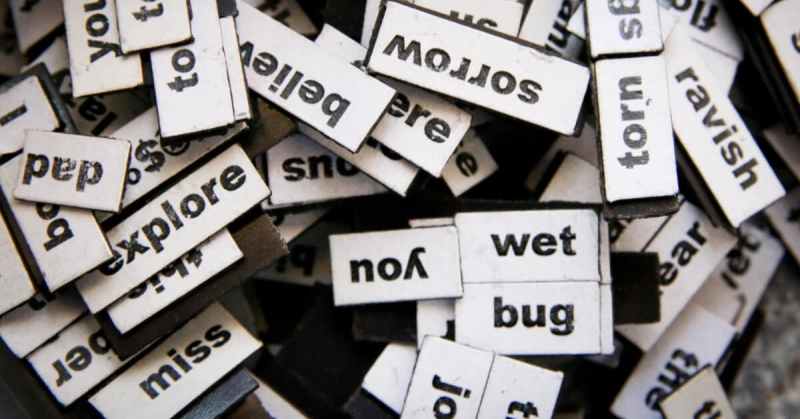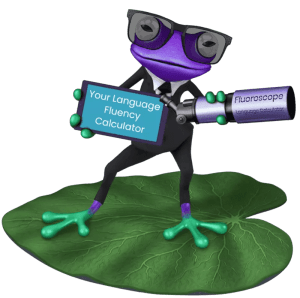What Is an Adjective? Explanation, Usage, and Examples

How Adjectives Modify Nouns
Adjectives are words that modify nouns. They can describe the physical characteristics of a noun, such as its colour, shape, size, or texture. They can also describe the emotions that a noun evokes, such as happy, sad, or angry. In some cases, adjectives can even describe a noun’s sounds, such as loud, soft, or squeaky.
Adjectives can be used to make a sentence more enjoyable and to provide more information about the word they modify. For example, instead of simply saying “I saw a dog,” you could say “I saw a small brown dog.” By adding the adjectival meaning “small,” you provide more information about the dog’s size. And by adding the adjective “brown,” you provide more information about its colour. In this way, adjectives can help to make the English language more descriptive and interesting.
Uses of Adjectives
Coordinate Adjectives
Coordinate adjectives are adjectives that modify the same noun and are separated by a comma. In the sentence “She wore a green, silk dress,” both “green” and “silk” modify the noun “dress” and are separated by a comma. While most adjective phrases consist of only one adjective, it is not unusual for coordinate adjective phrases to include two or more adjectives. When this happens, each adjective must be separated by a comma.
If one of the simpler adjectives is joined to the noun by a conjunction (e.g., and, but, or), then no comma is used. For example, in the sentence “He bought a small, used car,” both “small” and “used” modify the noun “car.” However, in the sentence “He bought a small and used car,” only “used” modifies the noun “car.” The adjective “small” modifies the adjective “used.”
When using coordinate adjectives in phrases, it is important to use parallel structure. This means that all of the adjectives must be in the same form. For example, if an adjective is in the comparative form (e.g., smaller), all other adjectives must also be in the comparative form (e.g., smarter, faster).
Similarly, if an adjective is in the superlative form (e.g., smallest), then all of the other adjectives must also be in the superlative form (e.g., smartest, fastest). Failing to use parallel structure can result in confusion or ambiguity.
Degrees of Comparison
Adjectives are words that describe, identify or quantify people or objects and usually go in front of a noun. They don’t have to be just single words; they can be phrases, for example. Adjectives in phrases can be used in different ways, depending on what type of adjective it is. The main types are determiners, identifiers, quantifiers, qualifiers, and interrogatives.
The degree to which an adjective modifies a noun is known as its degree of comparison. There are three degrees of comparison: positive, comparative, and superlative:
- The positive degree is the basic form of the adjective and is used to describe someone or something without comparing them to anybody or anything else, for example: “The view from my hotel room was breathtaking”.
- When we want to compare one person or thing with another person or thing, we use the comparative degree of the adjective: “I’ve had better holidays but it was still enjoyable”.
- If we want to compare one person or thing with everybody else or everything else in its class, we use the superlative degree, for example: “That was the best meal I’ve ever eaten”.
Most adjectival meanings have all three degrees, although some have only two degrees (e.g. perfect) or one degree (e.g. unique).
Adjectives vs. Adverbs
The distinction between Adjectives and adverbs is that they are both types of modifiers, which means they are used to describe or change other words in a sentence. Typically adjectives are words that describe a noun, while an adverb is a word that describes a verb, adjective, or another adverb.
For example, in the sentence “She’s a slow runner,” the adjective “slow” is used to describe the noun “runner.” In contrast, in the sentence “She runs slowly,” the adverb “slowly” is used to describe the verb “runs.”
Adjectives and adverbs can also be used to compare two things. For example, the adjective meaning “faster” can be used to compare two runners, while the negative adverb “more slowly” can be used to compare two actions. This is not to be confused with link verbs, which would be “slowing”.
When comparing two things, it’s important to use the correct form of the adjective or adverb. For example, we would say “She’s faster than her sister” ( adjective form) but “She runs more slowly than her sister” (negative adverb form).
Adjective Usage Advice
Adjectives are a fundamental part of speech for English speakers, and their usage can significantly impact the meaning of what is being communicated. When used correctly, adjectives can add precision and clarity to writing. However, overusing adjectives can lead to wordiness and decreased readability. Adjectives should therefore be used sparingly and only when they add value to the sentence.
When choosing these forms of adjectives, it is important to select one that accurately describes the noun it is modifying. For example, typically adjectives like “large” being used to describe a cat would not be appropriate, as cats are small animals. It would be more accurate to use the adjective “fluffy.”
In general grammar rules, it is best to use simple, concrete words instead of complicated or abstract terms. By following these guidelines, you can ensure that your adjective usage is precise and effective. To improve this even further, we have compiled an extensive list below of the type of adjectives found in the English language.

Types of Adjectives
Absolute Adjectives
Absolute adjectives are types of adjectives in phrases that cannot be compared. For example, the adjective “dead” is absolute because you cannot compare one thing to another in terms of being dead. Similarly, the adjective “unique” is absolute because there is only one of something. Other examples of absolute adjectives include the words:
- Complete
- Perfect
- True
- Final
- Awful
While absolute adjectives cannot be comparative adjectives, they can still provide important information about the person or thing being described.
Proper Adjectives
This class of adjectives are adjective words that are derived from proper nouns. A proper noun is a specific name for a particular person, place, or thing. For example, the name “John” is a proper noun. The name “France” is a proper noun. The name “BMW” is a proper noun. When we use a proper adjective, we are using an adjective that specifically refers to a particular person, place, or thing. For example, the correct adjective “French” specifically refers to things from France. The correct adjective “BMW” specifically refers to things from BMW. Proper adjectives are always capitalized because they are derived from proper nouns. Examples of this include:
- Spanish
- Methodist
- Romanesque
- European
- Leftist
Material Adjectives
Material adjectives are a type of adjective that describes the physical composition of something. Unlike other simpler adjectives, material adjectives don’t usually come before the noun they modify but after it instead. For example, “I drive a car” but “I have a wooden table.” You can usually tell if an adjective is a material adjective if it answers the question “What is it made of?” Material adjectives can be used to describe both countable and uncountable nouns. For example, “I have a new plastic toy” and “We need more steel for the bridge.” As you can see, they don’t have to answer the question with material adjectives; they can also describe things made of multiple things that don’t have a specific composition.
- Woolen
- Metallic
- Cotton
- Stone
- Golden
While we often use more than one material adjective to describe something, beware of using too many as it can sound cluttered.
Observation Adjectives
Observation adjectives help us to communicate our observations more effectively. There are five main types of observation adjectives: visual, auditory, tactile, gustatory, and olfactory:
- Visual adjectives describe what we see
- Auditory adjectives describe what we hear
- Tactile adjectives describe what we touch
- Gustatory adjectives describe what we taste
- Olfactory adjectives describe what we smell
Some common examples of visual observation adjectives include “bright,” “colourful,” and “dark.” Some common examples of auditory observation adjectives include “loud,” “quiet,” and “noisy.” Some common examples of tactile observation adjectives include “smooth,” “rough,” and “soft.” Some common examples of gustatory observation adjectives include “bitter,” “delicious,” and “sour.” Some common examples of olfactory observation adjectives include “fragrant,” “stinky,” and “putrid.”
Gradable Adjectives
Gradable adjectives can be used with degrees of comparison, such as “more” and “most.” For example, the adjective “happy” can be comparative (e.g., “He’s happier than his brother”) or superlative (e.g., “She’s the happiest person I know”). Some common gradable adjectives include:
- Expensive
- Funny
- Hot
- Cold
- Tired
Non-gradable adjectives, on the other hand, cannot be compared. For example, the adjective “unique” is non-gradable, so we cannot say “more unique” or “most unique.” Some common adjectives include:
- Enormous
- Exhausted
- Hysterical
- Nuclear
- Freezing
Other more simple examples of non-gradable adjectives include “perfect,” “dead,” and “certain.” When using gradable and non-gradable adjectives, it is important to use the correct form of the adjective. Otherwise, you may accidentally change the meaning of what you are trying to say.
Attributive Adjectives and Predicative Adjectives
There are two main types of adjectives: attributive and predicative. Attributive adjectives appear before typically nouns or pronouns they modify, while predicative adjectives appear after the verb. For example, in the sentence “She is an intelligent student,” the adjective “intelligent” is predicative because it appears after the verb “is.” In contrast, in the sentence “The red car is fast,” the attributive adjective “red” is attributive because it appears before the noun “car.” More examples of attributes include:
- Happy
- Green
- Big
- Talented
- Quick
While attributive adjectives are usually essential to the meaning of a sentence, predicative adjectives are often unnecessary and can often be removed without changing the basic meaning of the sentence. As a result, attributive adjectives are generally considered to be more important than predicative adjectives.
Appositive Adjectives
Appositive adjectives modify typically nouns and provide extra information about them. For example, in the sentence “The soft, fluffy cat slept soundly,” the word “fluffy” is an appositive adjective that provides more information about the cat. Other examples of appositive adjectives include “Noam Chomsky, famous linguist,” and “The Eiffel Tower, located in Paris.” Some common forms of this adjective include:
- Cooperative
- Competitive
- Curious
- Determined
- Resourceful
Opinion Adjectives
An opinion adjective expresses the speaker’s feelings or attitudes about the person or thing. For example, “I think the new restaurant is terrible.” In this sentence, “terrible” is an opinion adjective. It tells us that the speaker thinks the restaurant is bad. Other examples of opinion adjectives include:
- Great
- Amazing
- Wonderful
- Awful
- Painful
These opinion adjectives express positive feelings, while simpler adjectives like “awful,” “horrible,” and ” terrible” express negative feelings. Whether positive or negative, opinion adjectives are an important part of communication. They help to express our individual opinions and attitudes.
Privative Adjectives
In grammar, a privative adjective is an adjective that indicates the absence of a particular quality or state. The word “privative” comes from the Latin privatus, meaning “deprived.” Privative adjectives are often used to describe physical conditions, such as blindness or deafness. However, they can also be used to describe more abstract concepts, such as ignorance or incompetence.
For example, the simpler adjectives “blind,” “deaf,” and “dumb” all indicate the absence of a particular sense. Similarly, the adjectives “ignorant,” “stupid,” and “foolish” indicate the absence of knowledge or intelligence. While privative adjectives are typically negative in connotation, they can also be used in a neutral or even positive way. For example, the privative adjectives “childless” and “carefree” can describe someone who is not burdened by the responsibilities of parenthood or employment. In general, privative adjectives are used to describe a lack or deficiency of something. Some examples of this include:
- Quirky
- Wacky
- Insane
- Mute
- Hairless
Numbers Adjectives
This class of Adjectives can be used to describe the quantity of something, as in “I have five cars.” In addition, these simpler adjectives can be used to describe the quality of something, as in “That car is fast.” Adjectives are typically placed in front of the nouns they modify, as in “I have a red car.” However, they can also be placed after the verb, as in “That car looks red.” Correct adjectives can also be compounds, as in “red-hot” or “white-hot.” Some examples of numbers adjectives include:
- First
- Second
- Third
- Fourth
- Fifth
Limiter Adjectives
While there are many different types of adjectives, limiter adjectives are particularly effective in terms of precision and description. As the name suggests, limiter adjectives limit or modify the nouns that they precede. This can be helpful in providing more accurate information about a particular subject. For example, if you were to describe a car as “fast,” this could mean that the car is speedy or that it has a powerful engine. However, if you were to describe the car as “the fastest car on the market,” this would provide a more precise description of the car’s speed. In this way, limiter adjectives can be helpful in terms of providing more specific and accurate descriptions. Some examples include:
- Few
- Little
- Several
- Some
- Many
Comparative and Superlative Adjectives
The comparative form is a class of adjectives in phrases used to compare two people or objects, and the superlative form is used to compare more than two people or objects. For example, the adjective “tall” can be used in the positive form to describe one person, in the comparative form to compare two people, and in the superlative form to compare more than two people. Comparative adjectives and superlative adjectives are usually formed by adding -er for the comparative form and -est for the superlative form. For example:
- The comparative form of “tall” is “taller”
- The superlative form is “tallest.”
Some irregular adjective forms must be memorized because they do not follow this pattern. For example, the comparative form of “good” is “better” and the superlative form is “best.” The comparative form of “bad” is “worse” and the superlative form is “worst.”
Compound Adjectives
Compound adjectives are forms of adjectives that are used together to modify a noun or pronoun. For example, the phrase “red hot” is a compound adjective. The adjective “red” modifies the noun “hot.” Compound adjectives can be made up of adjective + adjective, adjective + adverb, or adverb + adjective. For example, the phrase “hard-working” is made up of adjective + adjective, “well-informed” is made up of adjective + adverb, and “high-speed” is made up of adverb + adjective. Correct adjective phrases are usually hyphenated. More common examples of this include:
- Heavy-handed
- Light-footed
- Slow-moving
- Sweet-talking
- Sugar-coated
Demonstrative Adjectives
Demonstrative adjectives are a type of descriptive adjective that point out specific nouns or pronouns within a sentence. For example, the demonstrative adjective “this” can be used to point out a specific noun, as in the sentence “This book is very interesting.” Alternatively, the demonstrative adjective “that” can be used to point out a specific pronoun, as in the sentence “That was a great movie.” In each case, the demonstrative adjective helps to create a more specific meaning for the sentence. Common examples also include:
- Such
- Several
- This
- Some
- These
Denominal Adjectives
Denominal adjectives are examples of adjectives that are derived from nouns. They can be either regular adjective endings, such as “-able” or “-ous”, or they can be completely irregular, such as “green” or “wooden”. Denominal adjectives are often used to describe the physical properties of something, but they can also be used to describe more abstract concepts, such as “summery” or “wintery”. In general, denominal adjectives are very versatile, and they can be used in a wide range of contexts. Examples of these include:
- Foxy
- Catty
- Firey
- Furry
- Ashen
Nominal Adjectives
Nominal adjectives are types of adjectives used to modify nouns. They can be used to indicate size, shape, colour, material, nationality, or quantity. For example, the adjective “small” can modify the noun “dog.” The adjective “square” can modify the noun “box.” The adjective “red” can modify the noun “apple.” The adjective “wooden” can modify the noun “chair.” The adjective “American” can modify the noun “citizen.” And the adjective “many” can modify the noun “people.” Nominal adjectives are an important part of speech, and they can add a great deal of meaning to a sentence. More examples include:
- Canadian Bacon
- Black Molasses
- Leather Couch
- Metal Canoe
- Apple Tree
Participial Adjectives
A participial adjective is a descriptive adjective that is derived from a verb. The word “participial” comes from the Latin word “participium,” which means “sharing in.” Participial adjectives are sometimes also called verbal adjectives or gerundive adjectives. In English, participial adjectives are typically formed by adding the suffix “-ing” or “-ed” to a verb. For example, the adjective “bored” is derived from the verb “bore,” and the adjective “interesting” is derived from the verb “interest.” Grammar rules generally suggest that participial adjectives modify nouns or pronouns. More examples include:
- Sneezing
- Bleeding
- Snowed
- Sewing
- Voted
Collateral Adjective
Collateral adjectives are adjectives that come after the noun they modify. For example, in the sentence “She has a number of books best-selling at the moment”. The phrase “best-selling” is a collateral adjective. It comes after the noun “book” that it modifies and adds information about that noun.
Collateral adjectives are also known as postpositive or interrogative adjectives. Most adjectives in English are collateral adjectives. However, there are some exceptions, like demonstrative adjectives (e.g., “this book”), possessive adjectives (e.g., “my book”), and interrogative adjectives (e.g., “which book?”).
Callocating Adjectives
Collocating adjectives are adjectives that tend to go together. For example, “bittersweet” or “heartfelt.” The word “collocate” comes from the Latin words for “together” and “place.” So, when we talk about collocating adjectives, we’re talking about adjectives that are often found together in a sentence.
There are many different kinds of collocating adjectives. Some common examples include adjectives that describe emotions, such as “happy,” “sad,” or “angry.” Other common collocating adjectives describe physical sensations, such as “hot,” “cold,” or “spicy.” Additionally, people often use collocating adjectives without even realizing it. If you’ve ever described someone as being “stubborn” or “lazy,” then you’ve used a collocating adjective! More common collocates include:
- Heatwave
- Threadbare
- Hotwired
- Risktaking
- Heartbreak
Postpositive Adjectives
Postpositive adjectives are forms of adjectives that come after the noun or pronoun that it modifies. For example:
- In the postpositive sentence “The man is rich and famous,” the adjective “rich” modifies the noun “man,” and the adjective “famous” modifies the pronoun “he.”
- In contrast, in the sentence “The rich and famous man,” the adjective “rich” modifies the pronoun “he,” and the adjective “famous” modifies the noun “man.”
As this example shows, the meaning of a sentence can or cannot change depending on whether an adjective is placed before or after the noun or pronoun that it modifies.
Predicative Adjectives
Predicate adjectives are a type of descriptive adjective that is used to describe the subject of a sentence. They are usually placed after the verb, and they often describe the subject’s current state or how the subject is feeling. For example:
- In the sentence “The sky is blue,” the adjective “blue” is predicative because it describes the current state of the sky.
- In contrast, in the sentence “The sky was blue yesterday,” the adjective “blue” is not a predicate adjective because it does not describe the current state of the sky. Rather, it describes an event that happened in the past.
As a result, a predicative adjective in sentences is often used to describe temporary states or events, while non-predicate adjectives are used to describe permanent states or events.
Intersective Adjectives
Intersective adjectives are adjective phrases that intersect the verb phrase in a sentence. That is, they come between the subject and the verb. For example:
- In the sentence “The big black dog barked,” “big” and “black” are intersective adjectives because they come between the subject (“dog”) and the verb (“barked”).
Intersective adjectives can also come after the verb phrase, as in the sentence “The dog barked loudly.” In this sentence, “loudly” is an intersective adjective because it comes after the verb phrase (“barked loudly”). Although intersective adjectives are not as common as other types of adjectives, they can be used to add emphasis or style to a sentence.
Non-Subsective Adjectives
Non-subsective adjectives are a type of descriptive adjective. They don’t change if the noun is plural. For example:
- ‘I have two sisters who are tall’. The adjective ‘tall’ doesn’t change even though there are two sisters.
Other examples of non-subsective adjectives include adjectives like:
- Square
- Oval
- Straight
- Oblong
- Round
As you can see, these non-subsective adjectives describe the shape of something rather than how many there are of them. Non-subsective adjectives are adjectives that cannot be divided into smaller parts without changing their meaning. So, in summary, a non-subsective adjective is a type of adjective that doesn’t change if the noun is plural.
Eponymous Adjectives
Eponymous adjectives are those that are derived from a person’s name. For example, the word ” Quixotic” comes from Miguel de Cervantes’ novel Don Quixote. In the book, the main character, Don Quixote, is a nobleman who takes on ridiculous adventures in an effort to revive chivalry. As a result, the eponymous adjective “Quixotic” has come to describe someone who is idealistic and impractical.
Other eponymous adjectives include:
- Nike, which comes from the Greek goddess of victory
- Paschal, which refers to the Christian holiday of Easter
- Perhaps the most popular eponymous adjective of all – “Shakespearean”, is used to describe something that is characteristic of the works of William Shakespeare.
While these eponymous adjectives might seem like curious choices at first glance, they actually provide insight into the origins of our language.

Adjective Facts
How do we use adjectives?
Adjectives can be used to describe the qualities of something, such as its size, shape, colour, or material. They can also be used to describe its properties, such as how hot or cold it is, how fast or slow it is moving, or how much of it there is. Typically adjective meanings can also be used to describe the way someone feels about something, such as how happy or angry they are. Finally, adjectives can be used to give extra information about someone or something, such as their age or nationality. In short, adjectives are a very versatile class of words that can be used in many different ways. For additional resources, look for dictionaries that specialize in possessive adjectives, interrogative adjectives, demonstrative pronouns, and actual nouns.
Where do we use adjectives in a sentence?
In a sentence, adjectives usually come before the noun or pronoun that they modify. For example, in the adjective phrase “The green dress is pretty,” “green” is an attributive adjective that modifies the actual noun “dress.” Adjectives can also come after certain verbs, such as “be,” “seem,” “appear,” “get,” “taste,” and “smell.” For example, in the sentence “The dress looks green,” the adjective “green” comes after the native verb “looks.” There are some exceptions to this rule: for example, when using the verb “to be” with an adjective that describes a permanent quality, the adjective usually comes after the native verb.
Can a sentence end with an adjective?
It is perfectly grammatical to end a sentence with an adjective, though it is not very common. Some English speakers recommend against it, as it can come across as overly dramatic or flowery. However, there are times when ending a sentence with an adjective can be effective. For instance, if you want to emphasize the adjective in question, or if the possessive adjective is short and punchy. Ultimately, it is up to the writer to decide whether ending a sentence with an adjective is the right choice for their particular piece.
Are there words that are both nouns and adjectives?
There are indeed words that can function as both adjectives and nouns. The adjective form usually describes someone or something, while typically nouns refer to a person or thing. For example, the adjective “rich” can describe a person who has a lot of money, while the noun “rich” can refer to a specific individual who fits that description. Similarly, the two-syllable adjective “happy” can describe a feeling of joy, while the noun “happy” can refer to a particular event that caused that emotion.
What is the distinction between adjective, verb, and adverb modification?
In grammar, a modifier is a word, phrase, or clause that provides additional adjectival meanings about another word or phrase in a sentence. Modifiers can be used to change the meaning of a word or phrase, making it more specific or more general. For example, the adjective “red” is a modifier that can be used to describe a variety of different objects, from apples to clothes.
These grammar rules of true Adjectives can also be used to intensify the meaning of a word, as in the sentence “She’s a very talented singer.” In this case, the two-syllable adjective “very” modifies the adjective “talented,” making it stronger.
A verb that is an “-ing word” is a “present participle”. By adding these three letters, you can create link verbs. These link verbs are modified verbs that can help incorporate an adjective in sentences and describe actions. This modification is commonly found in native verbs of the English language.
Adverbs are another type of modifier; they typically modify verbs and adjectives. For example, the adverb “quickly” can be added to the verb ” ran” to create the sentence “He ran quickly.” Adverbs can also be used to modify adjectives, as in the sentence “That’s one very big dog!” In this case, the adjective “big” is modified by the flat adverb “very,” making it even bigger. By understanding how modifiers of verbs work, you can add precision and detail to your writing.
What is incorrect adjective placement?
When used correctly, adjective placement can add precision and nuance to writing. However, adjective placement can also be a source of confusion for writers. Incorrect adjective placement occurs when an adjective is placed too far from the word it is modifying. This can create confusion for readers and make the sentence sound awkward.
For example, consider the following sentence: “I saw a man with a big telescope on the top of the hill.” In this sentence, the adjective “big” is incorrectly placed. The reader might interpret the sentence to mean that the man was big, or that the telescope was big. To avoid this type of confusion, it is important to place adjectives as close as possible to the word they are modifying. When in doubt, try reading your sentence aloud. If it sounds awkward or confusing, chances are that adjective placement is the culprit. With a little practice, you’ll be able to spot incorrect adjective placement and fix it in your writing.
What is the distinction between adjectives and abstract nouns?
The distinction between adjectives and abstract nouns can be confusing. Abstract nouns are words that refer to ideas, concepts, or emotions. They can be thought of as the opposite of concrete nouns, which refer to physical objects. These nouns do not rely on definite articles or indefinite articles to get their meaning across. Some examples of the necessary definite articles for concert nouns are words like “the” and “an”.
Adjectives, on the other hand, are words that describe or modify other words. For example, the word “happy” has an adjective meaning that can describe a person, a place, or a thing. Abstract nouns and adjectives both play an important role in language, but they serve different purposes. Abstract nouns help us to express an English speaker’s thoughts and feelings, while adjectives help us to describe the people, places, and things around us.
What is the difference between adjectives and adjectival nouns?
Adjectives are words that modify nouns or pronouns. They can describe physical characteristics, such as colour or size, or they can express abstract qualities, such as emotional state or level of intelligence. Adjectival nouns, on the other hand, are words that function as both adjectives and nouns. For example, the word ” poor” can be used to describe someone’s financial situation (“he is a poor man”), or it can be used as a standalone noun to refer to people who are in poverty (“the poor will always be with us”). While both adjectives and adjectival nouns play an important role in communication, they have different grammatical functions.
What are the most commonly used adjectives by native speakers?
A recent study sought to answer the question of which adjectives are most commonly used by native speakers. The study analyzed a corpus of written and spoken English to identify the most frequent adjectives. The results showed that the most common adjectives were “good,” “bad,” “big,” “small,” and “new.” These findings were consistent across different regional varieties of English.
The study also found that native speakers use a wider range of adjectives than non-native speakers. This is likely due to the fact that native speakers have a greater understanding of the nuances of the language. Ultimately, this research provides valuable insight into the way that native speakers use adjectives.
Frequently Asked Questions
An adjective is a word that describes a noun or pronoun. Adjectives can tell what kind, how many, or which one.
There are many different adjectives that can be used to describe people, places, and things. When teaching kids about adjectives, it can be helpful to provide them with a list of examples to get them started.
To identify an adjective, look for words that describe or modify nouns and pronouns. Adjectives can usually be identified by their position in a sentence; they usually come before the nouns they modify.
Adjectives and nouns are two of the eight parts of speech in English. An adjective modifies a noun or pronoun, usually to describe someone or something. For example, in the sentence “She is a beautiful woman,” the word “beautiful” is an adjective that describes the noun “woman.” A noun is a word that refers to a person, place, thing, or idea. For instance, in the sentence “I live in New York City,” the word “City” is a noun that refers to a place.
Adjectives are words that modify nouns or pronouns. They can be used to describe the physical appearance of someone or something, to express emotions or feelings, or to give more information about someone or something.
An adjective is a word that modifies a noun or pronoun. An adverb is a word that modify verbs, adjectives, and other adverbs. Adjectives and adverbs typically describe how, when, where, or to what extent something happens. For example, in the sentence “She ran quickly,” the adverb quickly modifies the verb ran. In contrast, in the sentence “He is a slow driver,” the adjective slow modifies the noun driver.
An adjective phrase is a phrase that functions as an adjective in a sentence. Adjective phrases typically consist of a preposition, an adjective, and a noun. For example, in the sentence “The man with the big hat is here,” the adjective phrase “with the big hat” modifies the noun “man.”
Adjective clauses are also known as relative clauses. Like all dependent clauses, an adjective clause cannot stand alone as a sentence because it does not express a complete thought. Adjective clauses are usually introduced by a relative pronoun (who, whom, whose, that, or which) or a relative adverb (when, where, or why).
A word that completely changes the meaning of a noun is called a determiner. Determiners can be adjectives, pronouns, or articles. For example, the adjectives “big” and “small” can change the meaning of a noun. The pronoun “some” can also change the meaning of a noun.

Learn from History – Follow the Science – Listen to the Experts
What’s the one thing that makes LillyPad so special? Lilly! She is a personal English tutor, and has people talking all over the world! Lilly makes improving your English easy. With Lilly, you can read in four different ways, and you can read just about anything you love. And learning with Lilly, well that’s what you call liberating!
For learners of all ages striving to improve their English, LillyPad combines the most scientifically studied and recommended path to achieving English fluency and proficiency with today’s most brilliant technologies!
Additionally, the platform incorporates goal-setting capabilities, essential tracking & reporting, gamification, anywhere-anytime convenience, and significant cost savings in comparison to traditional tutoring methodologies.
At LillyPad, everything we do is focused on delivering a personalized journey that is meaningful and life-changing for our members. LillyPad isn’t just the next chapter in English learning…
…it’s a whole new story!
Do you want to improve your English? Visit www.lillypad.ai.
Follow us on Facebook or Instagram!

Bethany MacDonald
Bethany MacDonald has contributed articles LillyPad.ai since 2020. As their Blog Lead, she specialises in informative pieces on culture, education, and language learning









